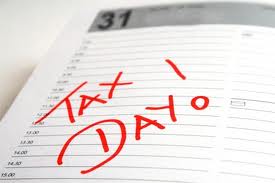GST/HST
What is the GST/HST Number?
GST/HST is a tax that applies on most supplies of goods and services made in Canada. The GST rate is 5% across Canada and the HST rate varies from province to province.
As of July 01, 2010, much of Canada has now harmonized their provincial sales tax with GST to create the harmonized sales tax (HST). This rate is 13% in Newfoundland, New Brunswick and Ontario, 12% in British Columbia (back to GST at 5% & 7% PST) and 15% in Nova Scotia.
GST/HST registrants who make taxable supplies (other than zero-rated supplies) in one of these participating provinces collect tax at the provincial GST/HST rate. Registrants collect tax at the 5% GST rate on taxable supplies made in the rest of Canada (other than zero-rated supplies).
Who pays GST/HST?
Almost everyone has to pay GST/HST on purchases of taxable supplies of goods and services (other than zero-rated supplies). However, Indians and some groups and organizations, such as many provincial and territorial governments, do not always pay GST/HST on their purchases.
Who charges GST/HST?
Generally, GST/HST registrants have to collect GST/HST on all taxable (other than zero-rated) supplies of goods and services they provide to their customers. However, there are some exceptions for sales of taxable real property.
What is the Federal Business Number (BN)?
The BN is issued by the Canada Revenue Agency (CRA) and is used to unify all accounts a business may have with the federal government. The BN is used to operate corporate income tax, import/export accounts, payroll deductions and GST/HST.
When should I apply for the Federal Business Number (BN)?
Registration should take place after the company has been registered. We can assist you with both, the business registration and the GST/HST registration at the same time.
General Information about GST/HST
Most goods and services sold or provided in Canada are taxable at the rate of 5% (GST) or 12% to 15% (HST). Certain items, such as sales of basic groceries and prescription drugs are taxable at a rate of 0%. These are referred to as zero-rated goods and services. A limited number of goods and services are exempt from the GST/HST.
The GST/HST applies to most transactions from manufacturing to marketing and sales. Businesses and organizations registered for the GST/HST are referred to as registrants.
A Business must register to obtain a Business Number with a GST/HST account. Registrants can claim a credit to recover the GST/HST that is paid or payable on purchases used to provide taxable goods and services. This credit is called an input tax credit and can be claimed for the GST/HST paid or payable for goods or services acquired or imported for use, consumption or supply in their commercial (taxable) activities.
GST/HST registrants who provide taxable goods or services have to charge and collect the GST/HST on their sales. If the GST/HST collected is greater than the GST/HST paid or payable, the difference is sent to the CRA. If the GST/HST collected is less than the GST/HST paid or payable, a refund can be claimed.
Do I need to register for GST (Goods and Services Tax)?
While you are not required to register for GST/HST until your annual g ross revenues exceed a minimum threshold (currently $30,000) we generally recommend that any business register as soon as possible.
ross revenues exceed a minimum threshold (currently $30,000) we generally recommend that any business register as soon as possible.
Three reasons to register:
1. Unless you are a GST/HST registrant you cannot claim GST/HST input tax credits (GST/HST paid on business expenditures). If you are a GST/HST registrant and your input tax credits exceed GST/HST collected on sales, you may claim a refund of the excess from Canada Revenue Agency. If you’re not a registrant the GST/HST paid on expenses is included as part of the expense when computing net income.
2. Not being registered for GST/HST tells everyone that you are running a truly small business. (Your sales are below $30,000 per year) If your customers are other businesses, they expect to pay GST/HST.
3. Companies that are required to register for GST/HST must remit the GST/HST tax to Canada Revenue Agency even if it has not been collected from the customer. By registering for GST/HST upon starting your business you will eliminate the possibility of inadvertently surpassing the $30,000 threshold and being exposed to penalties and interest charges for noncompliance
GST/HST basics: five things you must know

Here are five fundamentals that businesses in Ontario and B.C. need to know about the new tax:
- HST combines the federal Goods and Services Tax (GST) with the provincial sales tax (PST) into a single tax.
- Ontario businesses will charge 13 per cent.
- B.C. businesses will charge 12 per cent (the lowest HST rate in Canada).
- HST applies to both goods and services, adding the provincial sales tax to services that would previously only have had GST applied.
- As of May 1, 2010 businesses that sell goods or services to be delivered, installed or performed on or after July 1, 2010 are required charge HST.
Which businesses will need to charge HST?
HST will apply to goods, services, real property and intangible property, such as contractual rights and patents. (We’ve included two charts below to show how the tax status of many goods and services will change.)
You will need to charge HST if:
- you have sales over $30,000 in the calendar year or any four consecutive quarters;
- your business is registered for the GST already.

Current GST registrants won’t need to apply for a new number. The business number (BN) you use for your GST account number will be the same number you will use for your HST account and your filing frequency stays the same.
Why harmonize?
In both Ontario and British Columbia, the HST is being introduced to help businesses cut red tape and save money. The purpose of harmonization is to make businesses more competitive and to stimulate the economy.
Here’s how this works.
Under the current tax system, you can claim back the GST you’ve paid on all of your business expenses, but you can’t do the same for PST. As a result, goods have a “tax history” that has PST added at every step of the supply chain. These hidden PST costs are included in the final price, with consumers paying tax on the embedded tax.
As a value-added tax, GST is different. There is no hidden tax, because businesses can use the GST they pay out as an input tax credit. The business only remits the difference between the GST it has collected and the GST it has paid.
Harmonization brings the same system and advantages to the collection of the retail sales tax portion. Every business expense that includes HST, from phone services to office supplies, will help reduce the total amount of tax remitted to the government.
GST/HST implementation checklist
The following checklist will help you identify the systems you will need to change to collecting GST/HST:
- Do you need to modify your cash registers or point-of-sale systems?
- Do you need to update automatic payments to include HST?
- Do you need to update your e-commerce website to add the HST? (Remember, your business might be closed for the July 1 holiday, but your website is not!)
- Do you need to update your accounting software to accommodate the new tax?
- Do you need to update your accounts receivable / accounts payable / invoicing software?
- Do you need to make adjustments to the way you do your input tax/taxable benefits calculations?
- Are there any other aspects of your business that will be affected by the new tax?
